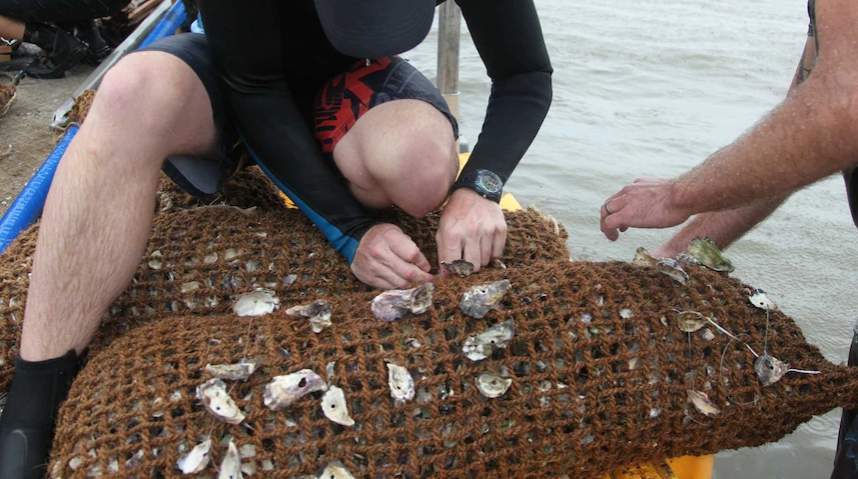
Communities have taken the lead in two new projects to bring oysters and, hopefully, fish back to popular Queensland tourist spots.
More than 100 years ago, oysters were so plentiful around south-east Queensland that entire reefs were dredged up to supply oyster saloons interstate.
Kerry Jones from the Kabi Kabi First Nation said oysters had been important for indigenous culture and trade, but much of that was lost when oysters were removed.
“A lot of our shellfish, all our middens were, a lot of ’em were destroyed,” he said.
“A lot of it was used for road base or chicken feed.”
Bryan Walsh from the Noosa Parks Association said the oysters were completely fished out of the Noosa River.
“When the dredging started, you got to remember refrigeration wasn’t around then in the 1860s, 70s and so on, so you could keep oysters alive for a couple of weeks in wet bags.”
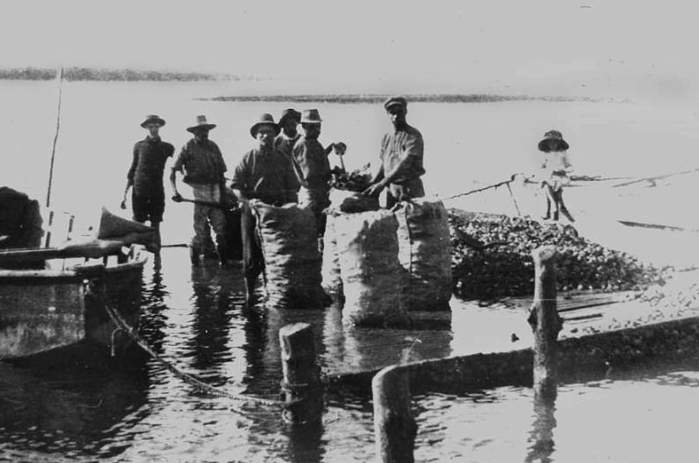
A few decades later, photos from around 1910 show enormous hauls around Bribie Island and Noosa, with up to 2,000 potato bags a year being taken out of the system.
“Historically this system was absolutely abundant in shellfish, fish anything you care to name, the dugong even came up here to graze on seagrass beds,” Mr Walsh said.
But like many large-scale clearing operations, it could not last.
Oysters began to disappear from river systems from the mid 20th Century and after that the fish also began to decline.
Dr Ben Gilby, from the University of the Sunshine Coast, said fish prefer to live around structures like oyster reefs.
“Fish require a whole heap of different habitats throughout their lifecycle.” Dr Gilby said.
“A fish might use seagrass during their early lifecycle and then move on into an oyster reef later on.”
Communities in Noosa and Bribie Island decided to bring back the oyster reefs to see if they could entice fish back to the holiday spots.
Noosa River oyster revival
A group including the Noosa Parks Association, Noosa Biosphere and researchers decided to install artificial oyster reefs in several locations in the Noosa river.
The reefs were made from large bags of coconut mesh filled with oyster shells.
“We call them our oyster sausages” Dr Gilby said.
The plan was for the sausages to attract baby oysters, or spats, which would then grow and take over the infrastructure, to make a natural reef.
Not long after the installation, the Noosa researchers saw an increased number of fish.
“Within the first week of the reefs being installed, we noticed a 36 per cent increase in the abundance of fish utilising those areas,” Dr Gilby said.
Reefs made from potato starch
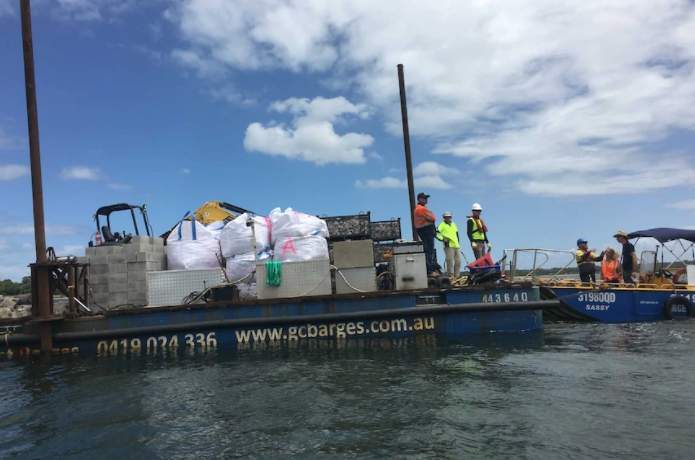
Further south, at Bribie Island, an even more ambitious reef project has taken place.
Three kinds of oyster reefs have been installed in Pumicestone Passage, including one made from oyster shells collected from local restaurants.
Another reef was made from live oysters, which were grown off pontoons by Bribie Island locals.
The final reef was a plastic system developed in the Netherlands, made from biodegradable potato starch.
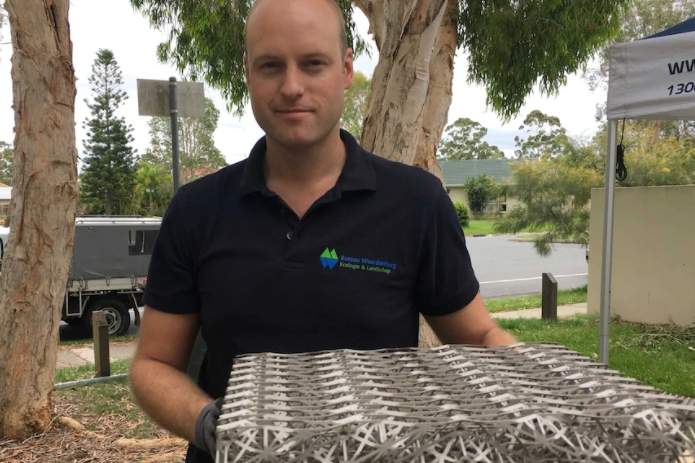
One of the Dutch developers, Wouter Lengkeek, said it was the first time the plastic reef had been tested in Australia.
“It’s a complex three dimensional structure, that can provide stability, prevents predators from coming in there and eating the mussels or oysters.” Mr Lengkeek said.
The potato starch matrix is designed to break down over the next five years as the oysters grow and eventually provide their own reef structure.
Other benefits of oysters
Susie Chapman from the Healthy Land and Water, one of the groups behind the Bribie Island project, said it had been an exciting experiment.
“The oyster reefs are so important historically and environmentally, and so to be bringing them back is such a joy to everyone involved.” Ms Chapman said.
“Down the track it would be nice to think that the water quality would also improve, because oysters are filter feeders and filter the water.”
It will be a few months before either project can tell whether the baby oysters have taken to their new homes, but researchers said other communities should also look at oyster reefs.
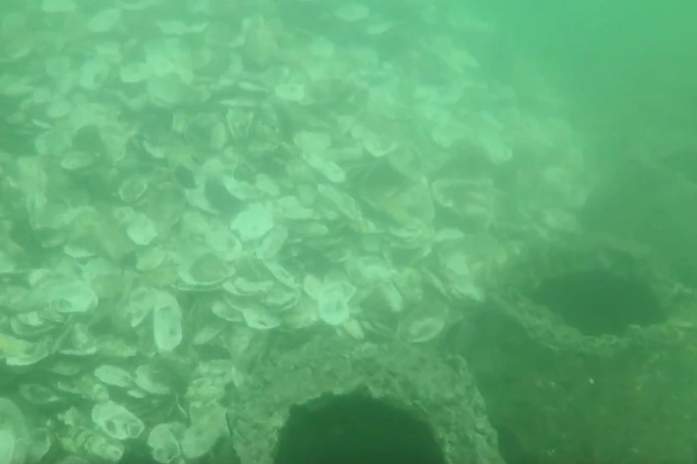
“Already there’s been interest sparked from this project and others to expand these types of projects across Queensland.” Dr Gilby said.
